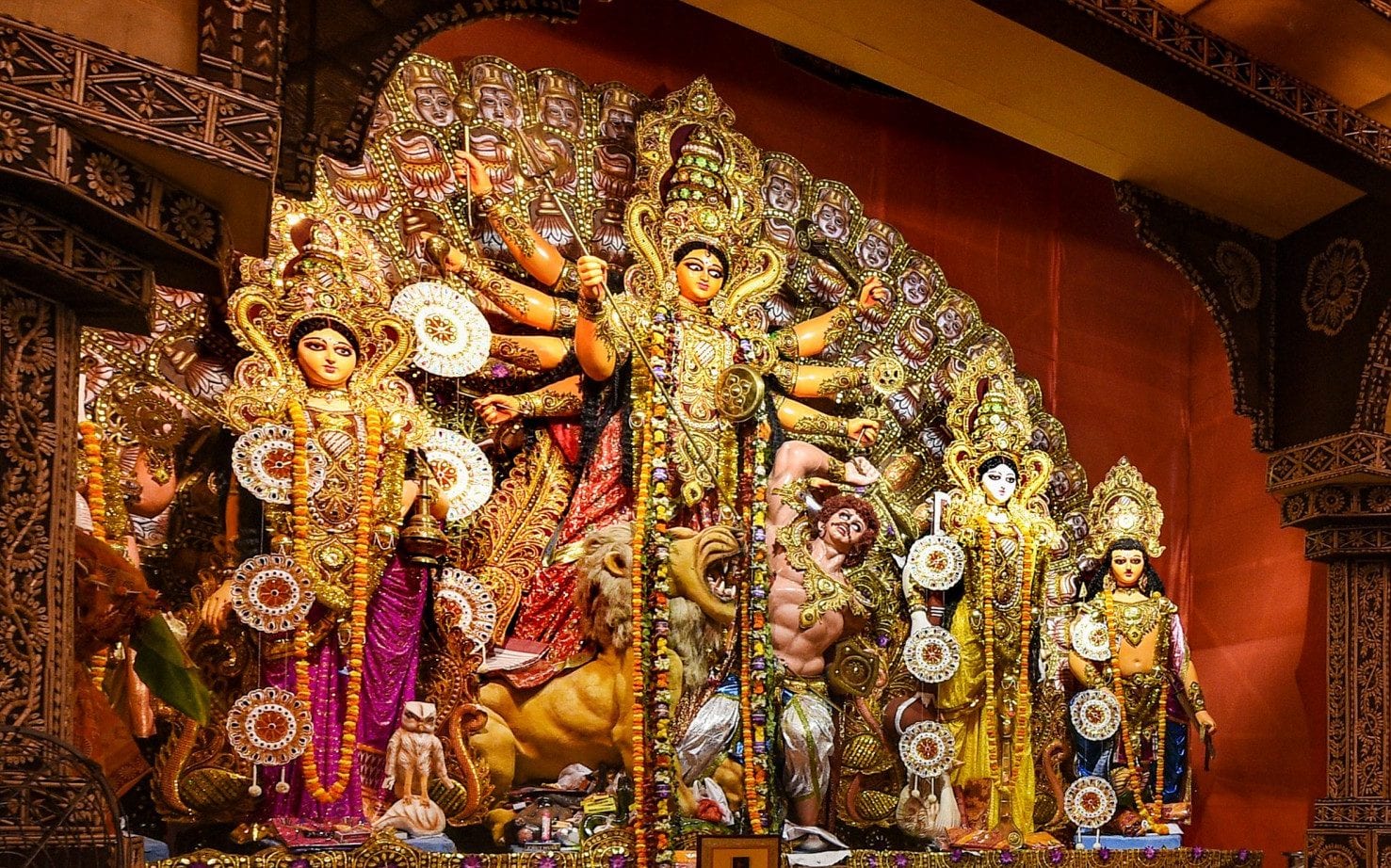
With Durga puja, harmony returns to Bengal's hotbed of communal tension
For the residents of Bhatpara, a small industrial town 33 km from Kolkata, which singed in communal riots for months since June, with the death of at least eight people, this Durga puja seems to be their moment of redemption.

Abdul Gaffar, finally, pulls up a chair at one corner of a Puja pandal in Bhatpara’s Purani Talab locality to relish his morning cuppa, as the rumbling of dhak beats softens and the snaking smoke from aarati thins away.
“Abhi tak toh sab thik hain (so far so good),” he muses as the morning rituals of Maha Saptami or the second day of Durga Puja ended without any hitch on Saturday.
From running last minute errands for the priest to get missed-out puja samagris (items needed for rituals) to getting electrical problems in the marquee fixed, Gaffar’s omnipresence at the Sree Durga Shakti Sangha’s puja cannot be overlooked. Being the secretary of the puja committee, he says, it’s his responsibility to ensure the success of the festival.
“Kuch kamiyan na rehen jai, baas, (there should not be any lacking, that’s it),” he says with a tinge of firmness that failed to hide a sense of determination.
Also read | Mughals to Mamata and now BJP: Politics at the heart of Durga Puja
Not far from the Purani Talab locality is the suburban town’s Babu Quarters Durga Puja, which is organised by the Bharatiya Nabayubak Sangh. There too, the Muslim faithfuls of the deity are seen equally determined and engaged to make most out of the festivity.
For the residents of this small industrial town, some 33 km from Kolkata, which singed in communal riots for months since June, with the death of at least eight people, this Durga puja seems to be their moment of redemption. Majority of people in this industrial town are migrants from the Hindi heartland.
“Muslims and Hindus have been residing peacefully in Bhatpara for ages. We have been celebrating Durga puja, Chhath, Diwali and Eid together with equal devotion. But bouts of madness provoked by the politicians had created mistrust and misunderstanding among us,” recalls octogenarian Munna Prasad, a resident of Kankinara, one of the worst riot-hit localities.
“The Eid celebration in June this year was marred by the communal violence, but thankfully we could put those bad memories behind and have come together, as in the past, to celebrate Durga puja with harmony and peace,” Prasad adds.
Also read | Why people are willing to die for political cause in Bengal?
The contribution of the Muslim locals, even financially, towards the organisation of pujas sings a melody of communal harmony across the state.
Birju Lal Srivastav, the president of Durga Shakti Sangha puja committee, says that Muslim communities make immense contribution for the puja. “The community even outnumbers the Hindus in giving donation for the locality’s puja. Also, our subscription list has more Muslim names than that of Hindus,” he adds.
Puja means fun, frolic and dining out, even for Muslims
Giasuddin Ansari, a jute mill worker, says that since childhood, to him, puja meant lot of fun and frolic with friends, eating out, and performing dhunachi dance in the puja pandals, and of course the immersion procession on Vijaya Dashami, the 10th and the final day of puja. Dhunachi is an incense burner used for aarti and during a ritualistic dance worship on Vijaya Dashami.
Also read | Bengal’s Bhatpara on boil; 1 killed, three injured in clashes
Another jute mill employee, Sandip Thakur, says that even Hindus enthusiastically take part in Eid and Muharram.
Ansari says that most of his friends were Hindus, but it never became an issue between them. However, since June, some of his friends have become aloof. “They too will soon join us again. After all it’s a small town, where, advertently or inadvertently, everyone needs to rub shoulder with everyone,” adds Thakur.
“Communal harmony is a necessity. Larenge to khayenge kya?” quips Ansari.
It’s on this pragmatism, Bhatpara is hoping that its interwoven composite culture would prevail once again over politics of hatred.

